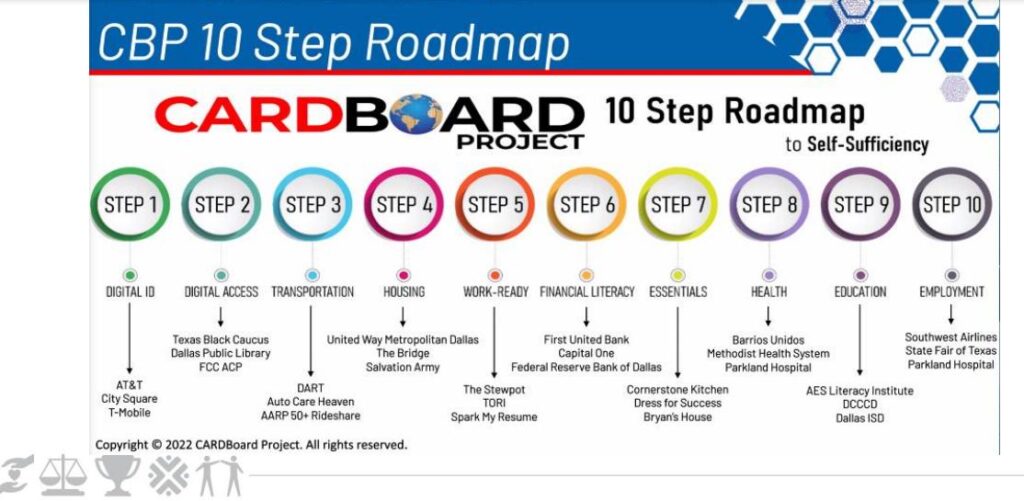(Candy’s Dirt) – District 2 Dallas City Council Member Jesse Moreno really wants to solve the city’s homeless problem and house the unsheltered — but he doesn’t want downtown’s J. Erik Jonsson Central Library to become a respite area for homeless individuals to take baths in public restrooms and nap in the Classics section.
Moreno said in a June meeting of the Housing and Homelessness Solutions Committee that he hears daily complaints from business owners and downtown residents about the central library. Additionally, staff members who have master’s degrees in Library Science have now essentially become social workers, he said.
“Our library’s intended purpose is to be a library and not a homeless facility,” Moreno said. “There is no question in my mind that we need to offer these services. When I’m talking to folks downtown they won’t go to our library because of what’s happening. Right now I believe the conditions of the library are not desirable. People who live and work downtown and people who are visiting Dallas are not having a great customer service [experience].”
‘Our Building is Open to Everyone’
Dallas Public Library Director Jo Giudice said that “as with downtown in general, homelessness has been associated with the J. Erik Jonsson Central Library since it opened in 1982.”
“Our building is open to everyone,” she said. “The library’s core service is information and referral but we’re also a place to get cool in the summer, get warm in the winter, and get water.”
The library got a grant in 2013 to start a homeless engagement initiative, which has been successful in referring unhoused individuals to local resources, Giudice said in a June 24 committee presentation.
The central library was the first to create a podcast — “Street View” — which provided a voice to those experiencing homelessness. Street View is now on hiatus but a similar spinoff launched called “On the Block.”
“They were telling their stories,” Giudice said. “It was quite influential. Other libraries are doing it now as well. It was a way to amplify the stories and demystify the process of homelessness. How did you get here? What is your story? These are human beings.”
Library staff is trained to deal with confrontations and follows a code of conduct. They direct those in need of help and services with shelter, transportation, and healthcare rather than just calling the police to report trespassing, Giudice explained.
In the last fiscal year, 1,300 customers were provided referrals to partner agencies.
“Every program that we offer in the library is open to everyone,” Giudice said. “I don’t think I’m a homeless provider. I think we are a bridge to other things.”
Safety Concerns at Jonsson Public Library
In response to a question from District 12 Councilwoman Cara Mendelsohn, Giduice acknowledged that some people don’t go to the central library because of the homeless people in and around it.
Some of it is perception or a years-old reputation they’ve had difficulty overcoming, Giduice added. Library staff brought in a consultant and added lighting, open space, and artwork to address incidents in bathrooms and stairwells.
“We don’t have those incidents anymore because we’ve made changes,” she said. “It was a turning point. We don’t have people bathing in the bathroom.”
What they do have is people sleeping in the library.
“We are a fairly empathetic group,” Giudice said. “We know that you can doze off when the conditions are right. We have to look at it holistically. I have college students who fall asleep in the library. Everyone has to be treated the same. We go up to the individual and ask if they’re OK. We do what we call a wellness check. If they are not causing a disturbance we might give them a little grace for a while. We go back multiple times and wake them up before we tell them they have to leave the building. I have senior citizens reading the paper that fall asleep too.”
The Misconceptions Are Real
Councilman Chad West said that years ago when the city opened inclement weather shelters, he believed most homeless people didn’t want to be housed and that most were panhandlers.
“I was wrong on both, but on the first one, there were nine out of 10 or more that wanted to be housed,” he said. “There were people who had master’s degrees. There were people who had just become homeless that day because they’d been kicked out of their house and they were between checks. It’s such a spectrum of people. The misconceptions are real. If you haven’t taken an opportunity to learn about these situations, go talk to them.

Library staff provides space for the city’s Office of Homeless Solutions and Downtown Dallas Inc. to meet with individuals The nonprofit CARDBoard Project provides connections to jobs, housing, and transportation.
Moreno said he and his family use their neighborhood library but do not visit the one downtown.
“I think my colleagues are coming from perhaps a different perspective because the central library is not in their district,” he said. “They don’t have the business [owners] calling and emailing them, the residents who live downtown calling and emailing them. I want to make sure the public understands that downtown has grown. Now we have over 15,000 residents who call downtown home. This is our library. We would not allow this to happen in any other neighborhood.”


